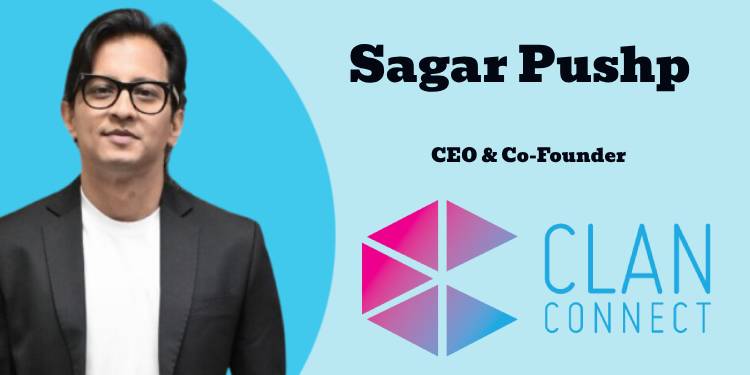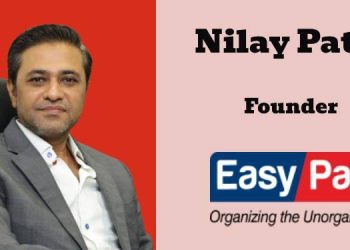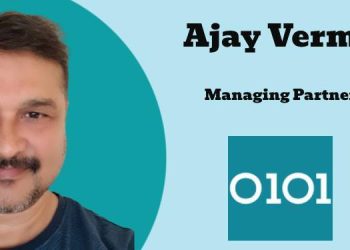ClanConnect began its journey in 2019 with a vision to transform influencer marketing through an AI-powered platform designed to seamlessly connect content creators and marketers. In 2020, ClanConnect took a significant step forward with the commercial launch of its platform, marking the start of a journey to streamline influencer marketing through technology. This year also saw the introduction of the brand module and the formation of a full-scale servicing team dedicated to managing brand mandates.
The momentum continued into 2021 with further expansion of brand and influencer-side capabilities, positioning ClanConnect as a key player in the influencer marketing space. In 2022, ClanConnect launched its marketplace feature to easily connect with influencers while ensuring secure data handling through Google and Meta API whitelisting. By 2023, ClanConnect introduced an industry-first free advertiser module and began rolling out ClanConnect 2.0, a major upgrade to the platform.
ClanConnect is planning to evolve by launching new features including an influencer app, influencer commerce tools, and further AI enhancements as part of the ClanConnect 2.0 initiative in 2025.
The platform now boasts over 80,000 registered influencers and has executed more than 350 campaigns, supporting over 80 brands across more than 10 sectors. The company prides itself on delivering tailored influencer insights that empower brands to make data-driven decisions, supported by a specialist client servicing team known for creative strategies, in-house content creation, and personalised campaign management.
Over the past five years, ClanConnect has been instrumental in leading numerous successful influencer campaigns, contributing to an impressive 45% year-on-year revenue growth. The company has engaged top influencers across industries such as fashion, tech, lifestyle, and automotive. In 2024, ClanConnect secured key client wins, collaborating with brands including Sennheiser, Lenskart, Patanjali, Mamaearth, The Derma Co, Adani Realty, Crompton, Wildstone Code, TARC, Woodnote, Emcure, MPL, and Juleo. These collaborations underscore ClanConnect’s commitment to driving campaigns and providing value in the influencer marketing ecosystem.
Medianews4.com caught up with Sagar Pushp, Chief Executive Officer and Co-Founder, ClanConnect
Q. Was 2024 the year that influencer marketing went to the next level?
Absolutely, 2024 marked a significant turning point for influencer marketing, showcasing remarkable growth and evolution. Studies have shown that many brands are allocating substantial portions of their marketing budgets to influencer campaigns, and projections indicate that by 2028, over 80% of brands might commit up to 30% of their budgets to this medium. Beyond budgetary expansion, there was a clear shift towards quality over quantity.
Brands prioritised authentic connections and high-quality content, collaborating with influencers who genuinely resonated with their audiences. The rise of micro and nano influencers also emerged as a defining trend, as these creators, despite having smaller followings, demonstrated highly engaged and loyal communities, delivering impactful and relatable campaigns.
Moreover, influencer marketing has become an integrated component of broader digital strategies rather than a standalone activity, signaling its maturity as a vital marketing tool.
Q. Was clutter a challenge in the influencer marketing space in 2024?
Yes, the exponential growth of influencer marketing in 2024 brought with it a significant challenge—clutter. The sheer increase in the number of influencers made it increasingly difficult for brands to identify relevant voices amidst the noise. This, coupled with heightened competition for audience attention, created a scenario where standing out required more effort and strategic planning.
Additionally, the risk of inauthenticity became a pressing concern, with some campaigns failing to resonate due to a lack of genuine connections between influencers and their audiences. To address these challenges, brands turned to data-driven platforms such as ClanConnect.
These platforms offered refined tools for audience analysis, influencer discovery, and performance tracking, ensuring campaigns were not only targeted but also effective. Furthermore, many brands shifted their focus toward micro and nano influencers, leveraging their ability to connect deeply with niche audiences and cut through the clutter with highly relatable content.
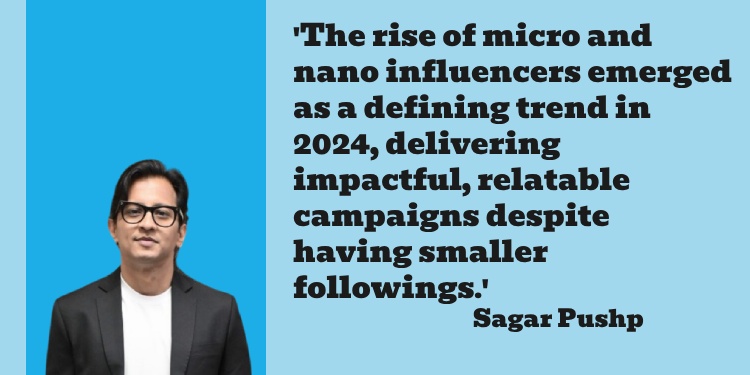
Q. The festive season saw brands use influencer marketing much more compared to the previous year. What tactics were seen in terms of how brands used this medium to get the message across?
The festive season of 2024 saw a significant surge in brands leveraging influencer marketing to connect with audiences, employing innovative and impactful tactics to deliver their messages. A key trend was the increased use of regional and hyperlocal influencers, particularly to engage diverse audiences in Tier II and Tier III cities.
These influencers, who resonate with local cultures, brought an authentic touch to brand campaigns. Authentic storytelling also took center stage, with brands focusing on relatable narratives that captured the festive spirit. For instance, Wildstone Code collaborated with influencer Maggie Says during the wedding season, creating content that struck a chord with viewers.
Festive integration was another standout tactic, with brands aligning their campaigns around traditional themes and activities. A notable example was Patanjali’s collaboration with influencers during Durga Puja pandal hopping, showcasing their products in culturally relevant settings. The emphasis on innovation in the influencer marketing landscape introduced new formats, such as ASMR videos and virtual influencers, to keep audiences engaged.
A popular theme across campaigns was the “getting ready” narrative, where brands highlighted festive preparations through outfits, makeup, skincare, and related products. User-generated content (UGC) also played a pivotal role, as brands like Havmor, Xiaomi India, and BigBasket tapped into nano-influencers and real-life scenarios to create relatable campaigns.
ClanConnect’s client Wildstone Code harnessed the power of UGC, achieving a cost-per-view (CPV) of 0.2 for their festive content, underlining the effectiveness of this approach. Together, these tactics showcased how influencer marketing adapted and innovated to capture the essence of the festive season, delivering campaigns that resonated deeply with audiences.
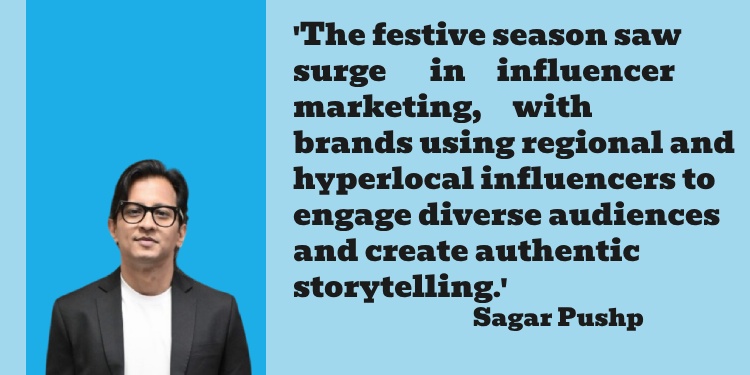
Q. In terms of digital marketing spends in 2024 what percent went to influencer marketing? Any data?
In 2024, influencer marketing saw strong growth, with 64% of brands allocating 5%-20% of their annual budgets to this medium, according to Influencer.in. The industry, valued at Rs. 5,500 crore, is set to grow 25% annually to reach Rs. 10,750 crore by 2027.
Instagram dominated as the preferred platform for 90% of brands, while LinkedIn saw rising adoption at 19.5%. Brands prioritized micro and nano influencers for authentic engagement, while 93% of influencers sought long-term partnerships and better budgets. Short-form content like Reels and Shorts gained popularity, yet long-form videos on YouTube remained impactful, reflecting a dynamic and expanding creator economy.
Q. Was the goal of influencer marketing by brands performance marketing or brand building? What was a bigger priority?
In 2024, brands sought to strike a balance between performance marketing and brand building, recognising the importance of both. Performance marketing gained prominence as brands faced increasing pressure to demonstrate ROI and leveraged advancements in platform measurement tools, such as link tracking on Instagram Stories.
However, brand building remained equally crucial, with campaigns designed to enhance brand awareness, credibility, and perception. New product launches and market entries often focused on creating awareness, while established brands leaned towards performance-driven strategies to boost sales and drive specific outcomes.
This dual approach underscored the evolving priorities of brands, striving to maximise their influencer marketing investments by aligning short-term results with long-term strategic goals.
Q. Which were the categories that sharply grew their use of influencer marketing in 2024? Any data?
In 2024, several categories saw significant growth in their use of influencer marketing. The sports industry, particularly in India, witnessed exponential growth with events like the Khokho World Cup and international leagues such as the IPL and ISL boosting fan engagement. Globally, leagues like the Saudi Pro League attracted stars like Messi and Ronaldo, further amplifying the trend.
The ESG sector also embraced influencer marketing as sustainability and responsible governance became critical focus areas, with influencers playing a pivotal role in raising awareness and enhancing brand credibility. Government initiatives utilized influencers for campaigns on education, healthcare, and public awareness, highlighting the medium’s expanding scope. Startups, especially digital-only brands, relied heavily on influencers to disrupt traditional markets, gain visibility, and build credibility. For instance, brands like RedFlame collaborated with podcasters and celebrity impersonators on platforms like Instagram to drive their campaigns.
Q. How did AI shape the dynamics of influencer marketing in 2024?
In 2024, AI significantly shaped influencer marketing by enhancing content creation, audience targeting, brand collaborations, and ROI optimization. AI-driven tools provide data-backed insights for content ideas, captions, and visuals, allowing influencers to stay on trend and create more engaging content. Predictive analytics help forecast content performance, ensuring maximum reach.
Precision targetting through AI enables micro-segmentation, optimal posting times, and personalised content based on follower behavior. AI also streamlines brand-influencer collaborations, with AI-powered matchmaking ensuring better alignment and campaign success predictions. Real-time feedback allows for campaign adjustments, boosting effectiveness. For brands, AI improves ROI by analyzing audience segments, optimizing budget allocation, and continuously tracking performance for better campaign results.
Q. What are ClanConnect’s views on government guidelines for influence marketing, especially influencers?
At ClanConnect, we strongly believe that clear and comprehensive government guidelines for influencer marketing are crucial for a healthy and sustainable industry. We prioritise compliance by strictly adhering to all relevant regulations and ensuring that our platform’s activities are fully in line with the law. Additionally, we take an active role in educating both brands and influencers on the importance of these guidelines.
We also promote transparency by encouraging clear disclosures of sponsored content, urging influencers to use hashtags such as #ad, #sponsored, or #partner to maintain openness with their audiences.
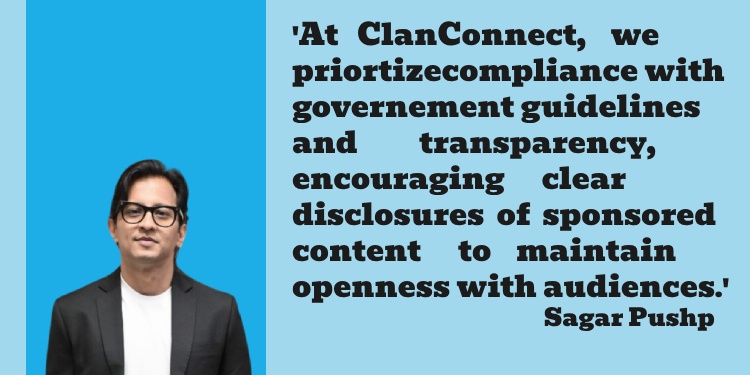
Q. Were there lots of instances where micro influencers were preferred over macro influencers?
In 2024, there was a clear trend towards brands preferring micro-influencers over macro-influencers, and ClanConnect worked with several brands to leverage this strategy effectively.
For Mamaearth, we partnered with 69 creators, with a significant focus on micro-influencers, to drive deeper engagement and target niche audiences aligned with the brand’s product range. This collaboration resulted in over 23 million views and more than 200,000 engagements.
Wildstone Code has consistently worked with lifestyle and fashion micro-influencers to showcase their products to specific target audiences interested in grooming and style.
Similarly, Lenskart has often turned to micro-influencers in the fashion and lifestyle space, helping to promote their eyewear to diverse demographics and varied style preferences.
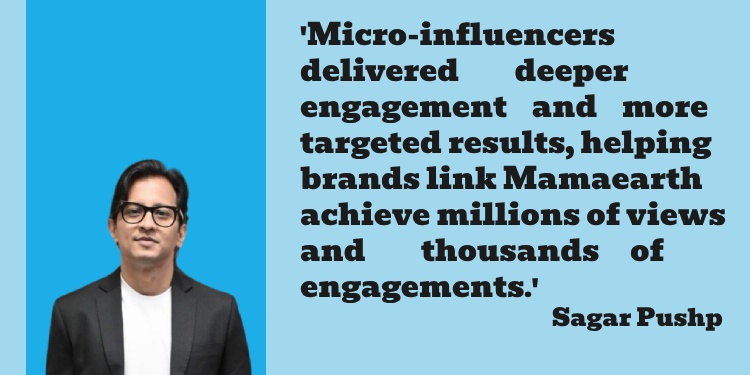
Q. What value did ClanConnect bring to the table for clients?
As of 2024, ClanConnect has delivered immense value to clients by revolutionising influencer marketing with a robust platform and personalized service offerings. We’ve achieved key milestones, with over 80,000 registered influencers and more than 350 successful campaigns for 80+ brands across 10+ industries.
Here’s how we’ve driven value:
● With ClanConnect, brands and agencies can now take campaigns live in just a matter of hours.
● We made significant upgrades by launching 2.0 version, such as direct chats with influencers and influencer agreements – bringing utmost transparency.
● Tailored Influencer Insights: We provided brands with data-driven insights into influencer performance, enabling more strategic and impactful campaign decisions.
● Creative Strategy and Content Creation: Our expert team worked closely with brands to craft innovative strategies, manage in-house content creation, and personalize campaigns for maximum success.
● Enhanced Platform Performance: We revamped our tech stack for higher performance, modularity, and scalability, ensuring smooth platform usage across multiple regions.
● Optimised Database Architecture: A revamped database structure improved platform responsiveness, reducing load times and enhancing the user experience for both brands and influencers.
● Real-Time Campaign Insights: Our platform offers real-time insights, enabling brands to make actionable, data-backed decisions.
● Improved Brand-Influencer Communication: Integrated chat functionality has streamlined collaboration, fostering direct communication and efficient campaign execution.
These improvements position ClanConnect as a valuable partner for brands seeking to elevate their influencer marketing strategies with precision, innovation, and efficiency.
Q. Could you talk about the 30 parameters like follower count, engagement, location that ClanConnect used to connect brands with the right influencers?
ClanConnect uses over 30 key parameters to connect brands with the right influencers, ensuring highly-targeted and effective campaigns. The core metrics include follower count and engagement rate, which determine an influencer’s reach and the quality of interactions they generate with their audience. Genre and location are also important, ensuring the influencer’s niche and geographic audience align with the brand’s target market.
Age and gender are taken into account to match influencers with the demographic focus of the campaign. Content performance metrics such as average likes, views, estimated reach, and impressions are analyzed to gauge the effectiveness of an influencer’s content. Additionally, audience demographics, including gender split, age range, and geographic distribution, help refine the targeting further. Reels and images engagement metrics, like engagement rate, estimated reach, average saves, and impressions, are reviewed, as well as reach comparisons across posts. Story metrics such as reach and impressions are also considered to assess the influencer’s influence across different content formats.
Finally, activity metrics such as total posts, post frequency, and average profile views help assess how active and visible the influencer is within their community. By leveraging these parameters, ClanConnect ensures that brands connect with influencers who not only align with their objectives but also possess an engaged audience that can drive impactful results for their campaigns.
Q. Did tech partnerships play an important role for ClanConnect in improving its product and scaling in 2024?
Tech partnerships played a crucial role in ClanConnect’s growth and product enhancement in 2024. We made significant strides by revamping our tech stack, ensuring higher performance, modularity, and auto-scaling capabilities. This upgrade enabled us to efficiently deploy and seamlessly operate our platform across multiple geographical regions simultaneously. Additionally, we improved our database structure to enhance responsiveness and reduce loading times, resulting in a smoother user experience.
Our platform’s infrastructure was further optimized to provide brands with better real-time campaign insights and increased visibility, empowering them with more actionable data. We also improved communication between brands and influencers through enhanced chat functionality, streamlining campaign execution. These tech upgrades, bolstered by strategic partnerships, have been pivotal in supporting our scalability and delivering an enhanced experience for our clients.
Q. What trends did we see in the growth of virtual influencers? What are the advantages and disadvantages of using them?
The growth of virtual influencers has continued to rise in 2024, driven by advancements in CGI and AI, which have made these digital personalities more realistic and expressive. Creators are increasingly focussing on crafting detailed backstories and personalities for virtual influencers, enhancing their engagement with audiences.
A key example of this trend was Nykaa’s collaboration with the creators of the Ganji Chudail meme for an animated ad promoting hair care products. The ad, which used a humorous narrative, received mixed reactions—while many praised Nykaa for its creativity, some raised concerns about reinforcing negative stereotypes.
Despite their growing presence, virtual influencers face challenges, including a lack of genuine human connection, the “uncanny valley” effect (where unrealistic representations evoke discomfort), and ethical concerns surrounding their authenticity. These factors must be carefully considered as brands explore virtual influencers as part of their marketing strategies.
Q. For 2025 what trends do you expect to see in the field of influencer marketing and how will Clanconnect leverage them? What goals have been set in terms of revenue, profitability etc? Where is the whitespace for growth?
In 2025, influencer marketing will focus more on last-mile conversions, as brands seek tangible ROI from campaigns, shifting from awareness to sales and customer acquisition. Virtual influencers will continue to grow, though brands must balance authenticity and ethical concerns.
Additionally, there will be a stronger emphasis on inclusion and diversity, which ClanConnect will leverage by expanding its database of diverse influencers, particularly those with niche followings.
ClanConnect aims for a 45% revenue growth in 2025, focusing on profitability through scalable platforms, enhanced services, and deeper penetration into emerging markets. Key growth areas include influencer commerce, particularly through ClanShop, and expansion into health, sustainability, and education.
To support these goals, ClanConnect is introducing Brand Pulse for better campaign insights, integrating AI for influencer matching and campaign management, and launching an influencer app with features like content prediction, pricing optimisation, and audience insights. These innovations will allow ClanConnect to strengthen its position in the evolving influencer marketing space.

